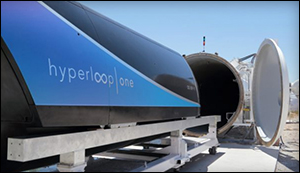Hyperloop One Hits Almost 200 MPH With Demo Pod
7. 8. 2017 | ExtremeTech | www.extremetech.com
While Elon Musk was busy with SpaceX and Tesla, he toyed with the idea of building a super-fast levitating train he dubbed a Hyperloop. Musk opted not to pursue that particular venture, but he did make the concept available as a whitepaper in 2013. A few companies have popped up since then with the aim of making the Hyperloop a reality, but Hyperloop One is currently the furthest along. This company has not only designed a working prototype in the desert near Las Vegas; it recently got its test pod up to 192 miles per hour.
There are a number of little tweaks to the Hyperloop formula, depending on who’s trying to build it. They all have one thing in common — a sealed low pressure tube in which the cars travel. The low air resistance allows Hyperloops to (theoretically) reach near-supersonic speeds. In the case of Hyperloop One, it’s using magnetic levitation to eliminate friction on the track. Musk’s original concept called for air bearings, though.

According to Hyperloop One, it depressurized its 500 meter test track “down to the equivalent of air at 200,000 feet above sea level.” That’s 37.8 miles (60.8 kilometers), so you’re over halfway to space at that point. The pressure at that altitude would be very close to a vacuum, somewhat lower than the 1 mbar called for in the original whitepaper. The unmanned test pod in this environment was able to accelerate over 300 meters, reaching a top speed of 192 miles per hour (310 kph).
Read more at ExtremeTech
Image Credit: Hyperloop One
-jk-




